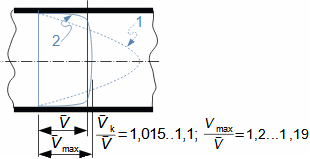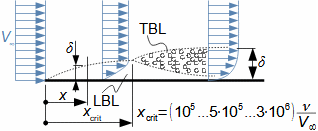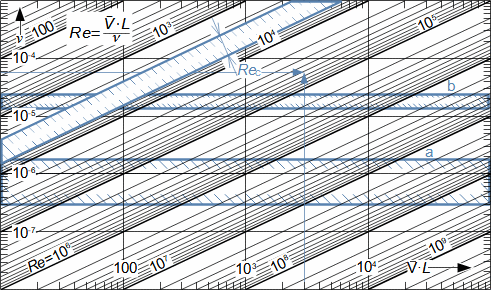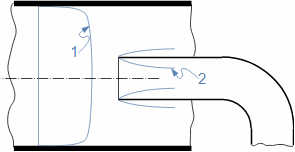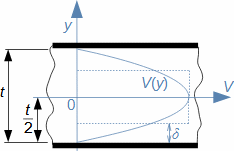Characteristic features of fluid flowInternal frictionLoss heatVelocity profileBoundary layerPressure lossThe entropy of the flowing fluid increases, which is caused by the internal friction of the fluid, which causes part of its kinetic energy to be transformed into the internal energy of the fluid (referred to as the loss heat). Other effects of internal friction are pressure loss as the fluid flows through the channel and a lower flow velocity at the channel walls and a higher velocity at the channel center - the distribution of fluid velocity in the channel section under investigation is called the velocity profile. However, the velocity profile develops gradually. Figure 1 shows the gradual development of the fluid velocity profile in a pipe at the outlet of a vessel under the action of internal friction. The effect of internal friction starts at the inlet of the pipe, where the fluid friction against the walls of the channel occurs, this loss of kinetic energy of the fluid propagates away from the walls and thus the velocity profile gradually develops. Simultaneously, the flow velocity in the core of the flow increases to maintain flow continuity, as the velocity is conversely very low near the walls. The region affected by the existence of a wetted wall is called the flow boundary layer. In the case of closed channels, the boundary layers of opposite sides, as they continuously grow, merge after a certain length xe. 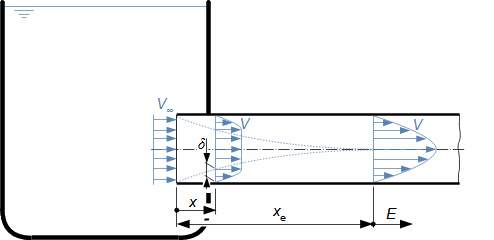 1: Rise and development of velocity profile in channel E-region of fully developed boundary layer. V [m·s-1] flow velocity at investigated location of channel; V∞ [m·s-1] flow velocity at inlet of channel section under investigation; x distance from inlet to pipe; xe [m] [m] entrance length (not completed boundary layer development); δ [m] boundary layer thickness.Ideal fluidFor the purpose of basic calculations of complex flow and comparison problems, we define an ideal fluid in which there is no internal friction and its heat capacity is constant. Ideal fluid flow models are closer to the actual flow the smaller the ability of the actual fluid to produce internal friction. |











